
Roots
The very strands that crown our heads hold stories—ancient whispers of identity, resilience, and connection to the earth. For those with textured hair, this connection runs particularly deep, woven through generations of communal care and ancestral wisdom. Our hair is not merely a biological feature; it is a living archive, charting journeys across continents, reflecting triumphs and tribulations, all while speaking a language of belonging. To truly grasp how cultural heritage shapes our choices for textured hair care, we must first listen to the echoes from the source, tracing the intricate relationship between humanity, nature, and the crown we wear.

Hair’s Elemental Truths Through an Ancestral Lens
The biological architecture of textured hair, with its unique helical twists and turns, often determines its particular needs ❉ a thirst for moisture, a propensity for shrinkage, and a tendency toward fragility if handled without gentleness. Yet, before scientific diagrams elucidated these complexities, communities across Africa and its diaspora understood these inherent characteristics through empirical observation, passed down through the ages. They developed sophisticated care regimens, not from laboratories, but from the land itself, responding to the hair’s elemental biology with the planet’s abundant gifts.
Textured hair, a living archive, embodies ancestral wisdom and enduring resilience, its care rituals echoing ancient bonds between people and the natural world.
Consider the Himba People of Namibia, whose women traditionally coat their hair in a rich mixture called otjize—a blend of butterfat, ochre, and aromatic resin. This practice, far beyond aesthetics, serves as a profound protective layer against the harsh desert sun and dry air, a testament to deep ecological understanding. It illustrates a heritage of care that acknowledges hair as a vulnerable yet powerful aspect of self, deserving of deliberate, nature-derived safeguarding.

Decoding Hair’s Lexicon and Lineage
Our modern systems for classifying hair texture, often numerical or alphabetic, sometimes fall short of capturing the full breadth of its diversity and the cultural significance each curl pattern carries. Historically, the language of hair was far richer, intertwined with social status, spiritual beliefs, and tribal affiliations. In many African societies, hairstyles and their accompanying care rituals were a visual language. They communicated age, marital status, wealth, and even a person’s community or lineage.
For instance, among the Yoruba People of Nigeria, hair was considered as important as the head itself, a sacred part of the body, and its careful maintenance was believed to bring good fortune. This traditional perspective shapes how plant choices are viewed for care. The plants were not mere ingredients; they were vital components of a holistic system of wellbeing, imbued with their own spiritual and medicinal properties.
A significant study on hair growth indicated that Fenugreek (Trigonella foenum-graecum), a plant used by some participants, presented the most effective hair growth activity in a short time, leading to sheathed and fortified hair shafts, thereby validating an ancient remedy with modern scientific inquiry. This finding connects ancient wisdom to contemporary understanding, showing the enduring power of traditional plant choices.

Ancestral Wisdom and Hair’s Lifecycle
Hair growth cycles, influenced by genetics, nutrition, and environment, were also implicitly understood by ancestors who observed patterns of health and vitality. Their plant choices often supported the scalp environment, recognizing it as the ground from which the hair springs. Poor scalp health, they knew, hindered luxuriant growth. Plant-based cleansers, conditioners, and emollients were chosen for their perceived abilities to cleanse without stripping, to nourish, and to protect.
Take the pervasive use of Shea Butter (Vitellaria paradoxa) across West Africa. Derived from the nuts of the shea tree, this butter is rich in vitamins A and E, essential fatty acids, and antioxidants. It deeply hydrates hair, promotes elasticity, and offers protection from environmental elements. This application is not a recent discovery; it is a continuation of practices passed down through millennia, a cornerstone of hair care for its moisturizing and protective qualities in often arid climates.

What Ancient Botanical Wisdom Offers Our Understanding of Textured Hair?
The rich history of plant usage in textured hair care offers a profound commentary on the ingenuity of our ancestors. Their deep connection to the natural world allowed them to observe, experiment, and pass down knowledge of plants that addressed the specific needs of textured hair long before chemistry labs existed.
- Shea Butter ❉ A staple in West African communities, renowned for its moisturizing and protective properties against harsh climates.
- Aloe Vera ❉ Widely used across indigenous cultures for its soothing and moisturizing abilities, promoting scalp health.
- African Black Soap ❉ A traditional cleanser from West Africa, made from plantain skins, cocoa pods, and palm oil, cleansing without stripping natural oils.
- Rooibos Tea ❉ From South Africa, celebrated for its antimicrobial and antioxidant properties, aiding healthy hair growth.
- Marula Oil ❉ A traditional oil from Southern Africa, valued for its moisturizing properties, rich in oleic acid and antioxidants.
- Qasil Powder ❉ Used by Somali and Ethiopian women as a daily hair treatment for cleansing and strengthening.
| Aspect of Hair Structure |
| Ancestral Understanding A spiritual crown, a marker of identity, family, and status, with properties observed through generations of care. |
| Contemporary Scientific Perspective The unique helical structure of textured hair, its varying curl patterns (coils, kinks), and its vulnerability to breakage. |
| Aspect of Hair Care Principles |
| Ancestral Understanding Holistic nourishment from the earth, protection from elements, communal rituals for maintenance. |
| Contemporary Scientific Perspective Emphasis on moisture retention, protein-moisture balance, low manipulation, and protection from environmental aggressors. |
| Aspect of Hair Plant Choices |
| Ancestral Understanding Plants chosen for observed efficacy, cultural symbolism, and local availability, often linked to spiritual power. |
| Contemporary Scientific Perspective Botanical ingredients analyzed for specific chemical compounds (e.g. fatty acids, antioxidants, humectants) that correlate with observed benefits. |
| Aspect of Hair The enduring practice of plant-based hair care showcases a profound, inherited understanding of textured hair, uniting ancient wisdom with contemporary appreciation for its intricate needs. |
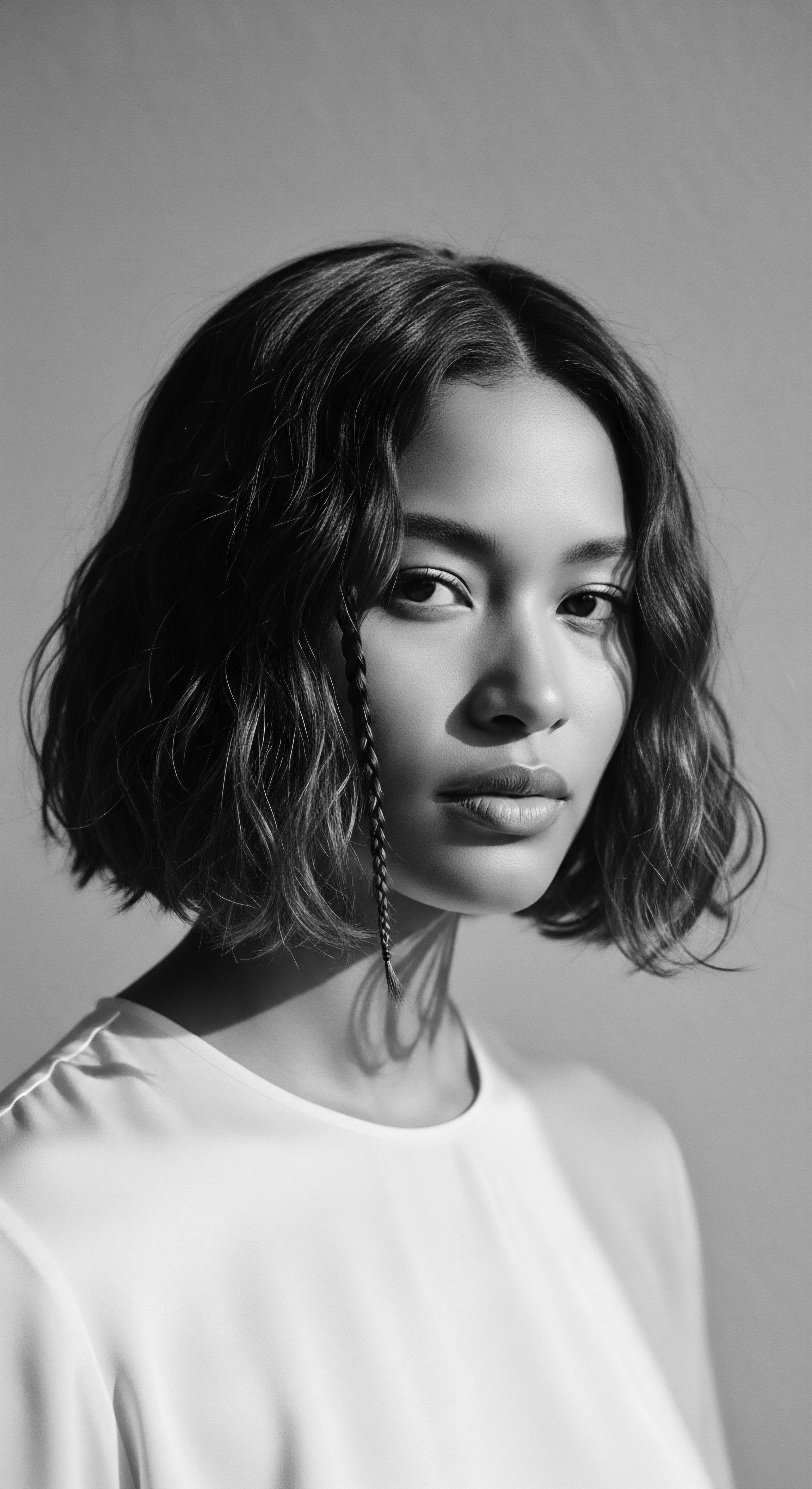
Ritual
Hair styling, for textured hair, extends far beyond mere aesthetic arrangement; it represents a living dialogue with heritage. It is a spectrum of techniques, tools, and transformations, each infused with generations of cultural meaning and practical knowledge. The plant choices woven into these rituals are not arbitrary selections; they are the tender threads that bind ancestral practices to contemporary expressions of identity. These plant materials often prepared the hair, lubricated the scalp, or offered protective properties that allowed for the longevity and integrity of these intricate styles.

Protective Styling Through the Ages
Protective styles, such as braids, twists, and locs, have roots stretching back thousands of years in Africa, serving as both functional and symbolic forms of adornment. They protected hair from environmental damage, minimized manipulation, and conveyed intricate social messages. The plants chosen for care within these traditions provided the very foundation for these styles to endure. For instance, the application of oils from locally available plants facilitated the braiding process, reducing friction and adding a lustrous sheen.
The communal act of braiding hair itself, often a multigenerational activity, strengthened family and community bonds. During these gatherings, knowledge about suitable plant preparations was passed down, from how to concoct a slippery elm detangler to the optimal use of Baobab Oil for scalp health before a long-term protective style. This oral transmission of wisdom cemented the role of specific plants in these enduring practices.
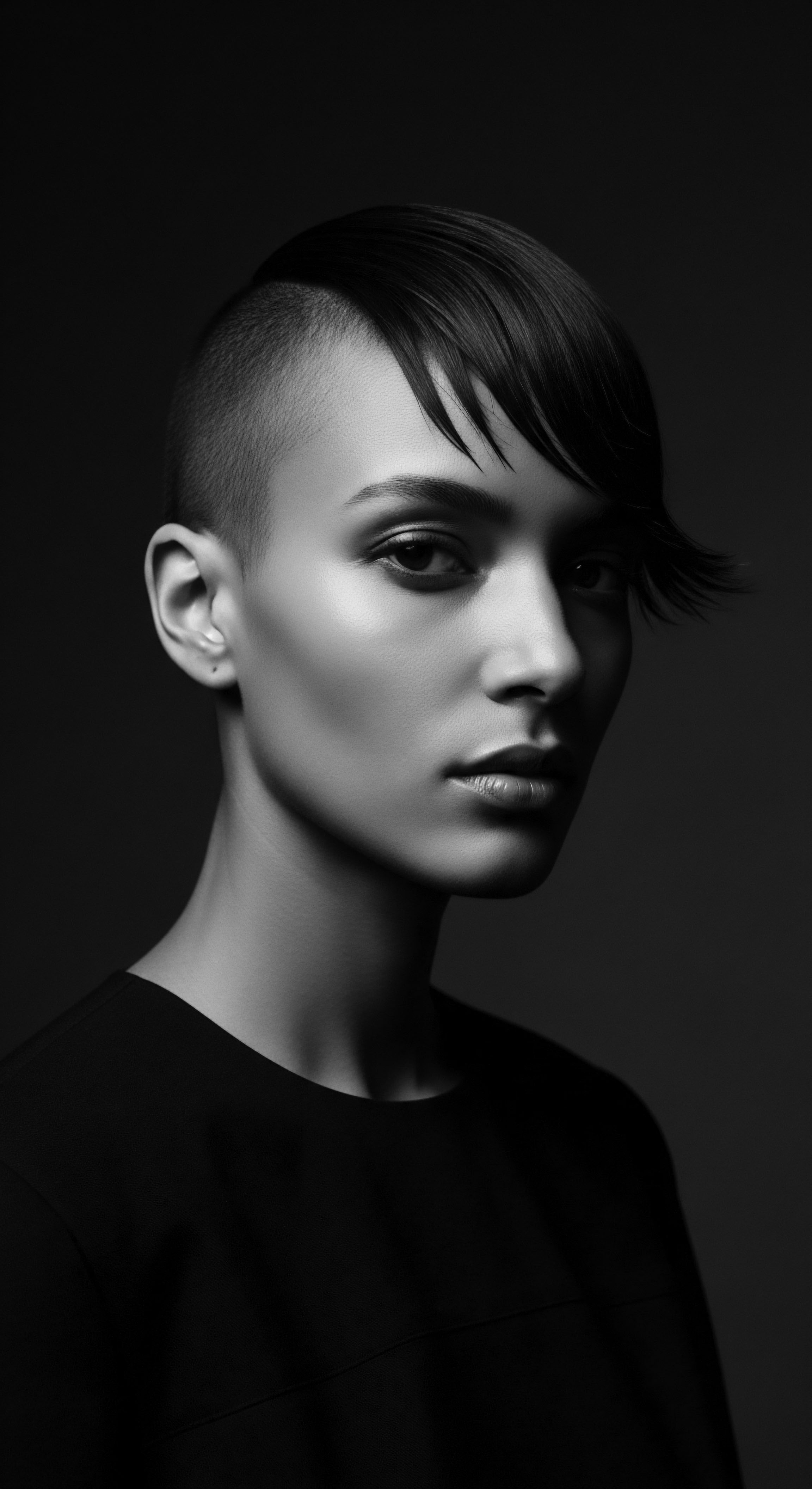
Natural Styling and Ancestral Definition
The celebration of textured hair in its natural state is not a recent phenomenon. Ancestral communities valued curl, coil, and kink patterns, utilizing plant-based concoctions to enhance their inherent definition and promote overall hair health. These methods were far removed from the chemical processes that would later dominate portions of the diaspora’s hair history.
Plant mucilages, derived from species like Okra or Flaxseed, were likely used to provide slip and hold, allowing for easy manipulation and definition without stiffness. These natural gels would have been readily available, offering a gentle, non-damaging alternative to modern synthetic products. The knowledge of these plants’ properties was learned through direct interaction with the environment, observing how certain plants reacted with water and heat to yield beneficial textures.
Hair styling, a living dialogue with heritage, uses plant choices as tender threads, binding ancestral protective practices to contemporary identity expressions.
The application of natural oils like Coconut Oil and Castor Oil (Ricinus communis) to define curls and add shine is another time-honored practice. These oils, deeply rooted in various African and diasporic traditions, provided moisture and a natural gloss that highlighted the hair’s unique texture, making it appear vibrant and healthy. This consistent use over centuries highlights their sustained effectiveness.
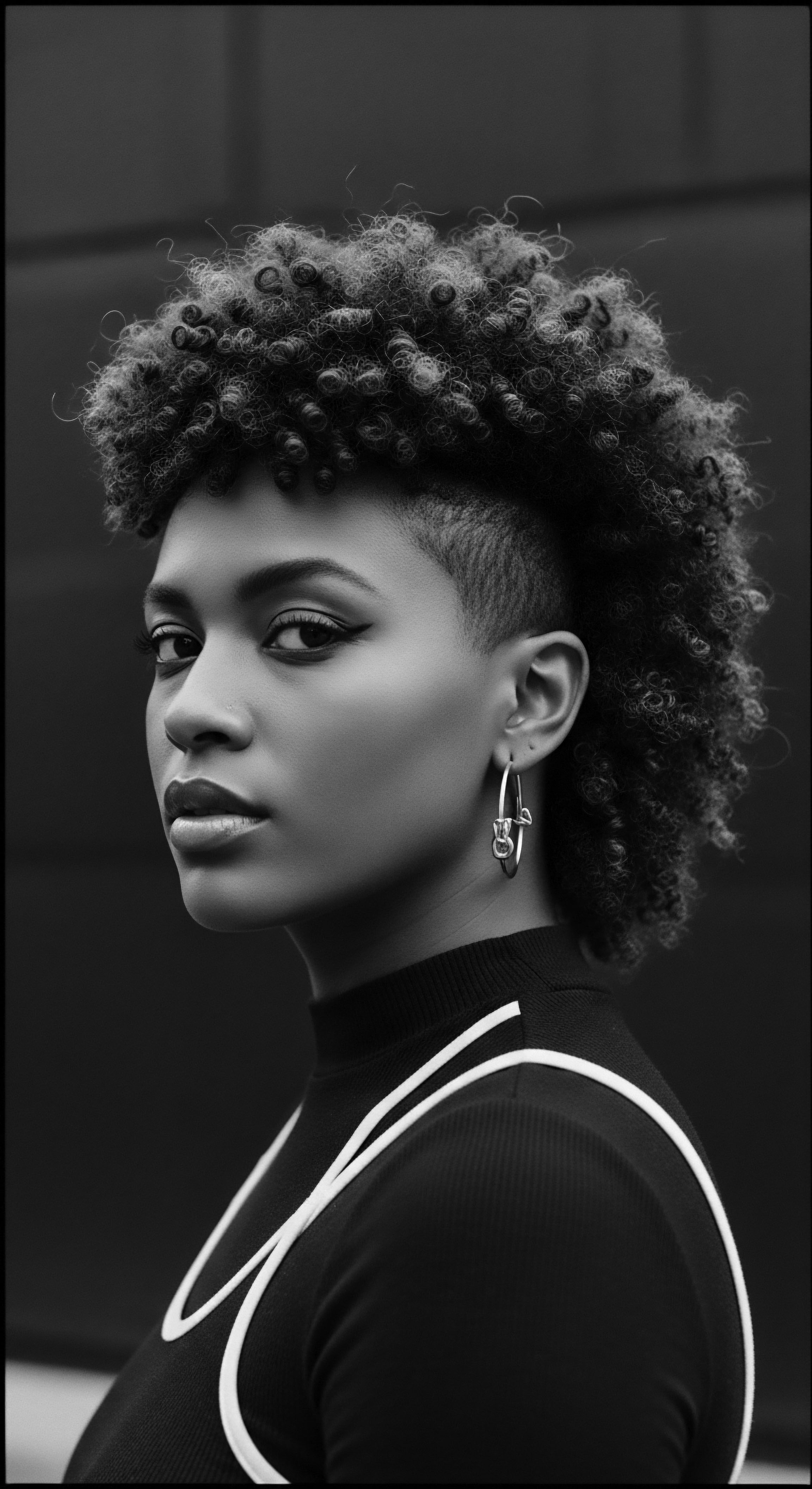
How Do Plant Choices Reflect the Heritage of Hair Manipulation?
The very plants chosen for hair manipulation reveal a continuum of knowledge, from their role in softening resistant textures to aiding in the formation of elaborate coiffures. Each plant brought specific properties that addressed the physical characteristics of textured hair.
- Palm Oil ❉ Utilized across Central and West Africa for its deep moisturizing qualities, adding a protective layer during styling.
- Henna (Lawsonia inermis) ❉ Predominantly in North Africa and the Middle East, used for centuries to strengthen hair, add color, and soothe the scalp, often prepared in communal settings.
- Amla (Indian Gooseberry) ❉ From Ayurvedic traditions, valued for strengthening hair and preventing premature graying, often massaged into the scalp with warm oils.
- Rhassoul Clay ❉ From Morocco, used as a traditional hair cleanser that purifies the scalp and hair without stripping natural moisture.
- Chebe Powder ❉ From Chad, often mixed with oils and applied to the hair to promote length retention and reduce breakage.

The Toolkit of Hair Heritage
The tools used in textured hair care, from wide-tooth combs carved from wood to bone picks, were often crafted from natural materials, working in harmony with the plant-based preparations. These tools were designed to navigate the natural curl patterns without causing undue stress or breakage.
The act of detangling, a crucial step in textured hair care, was made easier by the ‘slip’ provided by plant-based conditioners. The deliberate choice of tools, alongside the ritualistic application of botanical ingredients, speaks to a heritage of patience and precision in hair maintenance. This holistic approach recognized that the hair, the tools, and the plant ingredients were all part of a single, interconnected system of care.
| Traditional Tool Wide-Tooth Wooden Combs |
| Purpose in Hair Care Gentle detangling, distributing oils and conditioners. |
| Complementary Plant Choices Coconut Oil, Olive Oil, slippery elm preparations for added lubrication. |
| Traditional Tool Bone or Wood Picks |
| Purpose in Hair Care Creating volume, styling afros, lifting roots without disturbing curl patterns. |
| Complementary Plant Choices Light oils like Jojoba or Argan to add sheen; conditioning rinses to maintain softness. |
| Traditional Tool Fingers and Hands |
| Purpose in Hair Care Primary tools for applying products, sectioning, twisting, and braiding. |
| Complementary Plant Choices All plant-based products, especially butters (Shea, Cocoa) and thicker oils for thorough coating. |
| Traditional Tool The synergy between traditional tools and plant-based concoctions underlies a heritage of effective, gentle hair styling, minimizing damage while honoring texture. |
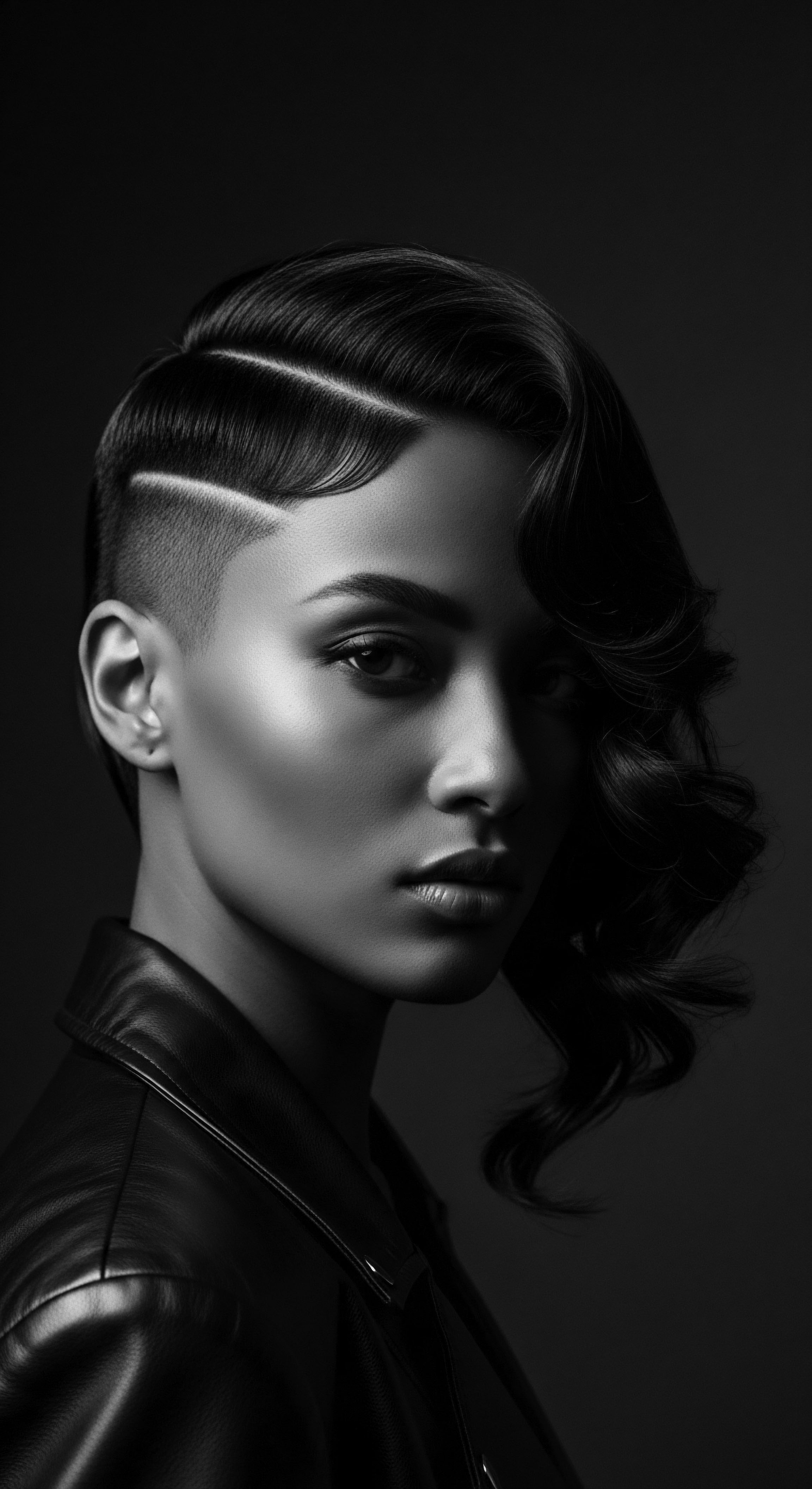
Relay
The passing of hair care practices from one generation to the next represents a vital relay of cultural heritage. It encompasses not just techniques, but also the deep understanding of plant properties, the intuitive wisdom of holistic wellbeing, and the enduring connection to ancestral ways of living. This segment delves into how cultural heritage informs holistic textured hair care and problem-solving, drawing from a rich tapestry of wisdom. The chosen plants are more than remedies; they are carriers of tradition, embodying a continuum of knowledge.
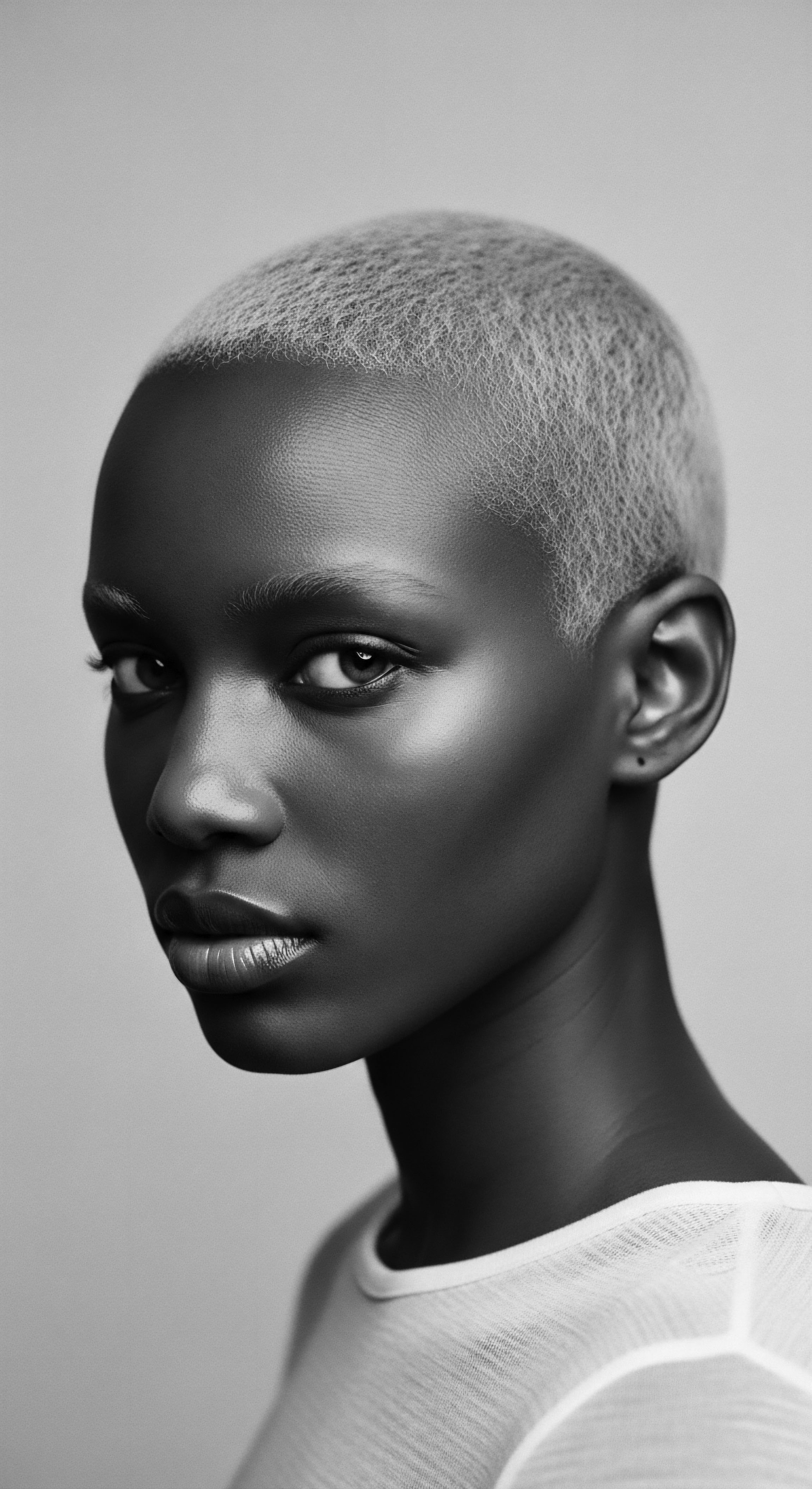
Crafting Regimens Inspired by Ancient Wisdom
Building a personalized textured hair regimen, whether in ancient times or today, always considered the individual’s specific hair characteristics, lifestyle, and environmental factors. Our ancestors understood adaptability. They knew that a regimen suitable for a dry, dusty climate would differ from one for a humid, tropical environment. Their plant choices reflected this ecological sensitivity, drawing from what was locally available and proven effective over centuries.
For communities in West Africa, where the shea tree grows abundantly, Shea Butter became a foundational element of daily hair care. It offered unparalleled protection and moisture retention, vital for hair susceptible to dryness. This consistent reliance on a single, powerful plant speaks to a deep, empirical understanding of its properties, honed by repeated application and observed results.
The transmission of hair care practices is a powerful relay of cultural heritage, rooted in an intuitive understanding of plant properties for holistic wellbeing.
Similarly, in East Africa, women of Ethiopian and Somali descent utilized Qasil Powder, derived from the leaves of the gob tree. This natural cleanser not only purified the hair but also nourished the scalp, setting the stage for healthy growth. These plant choices highlight a heritage of targeted care, where each botanical served a specific, often multifunctional, purpose within the overall hair health philosophy.
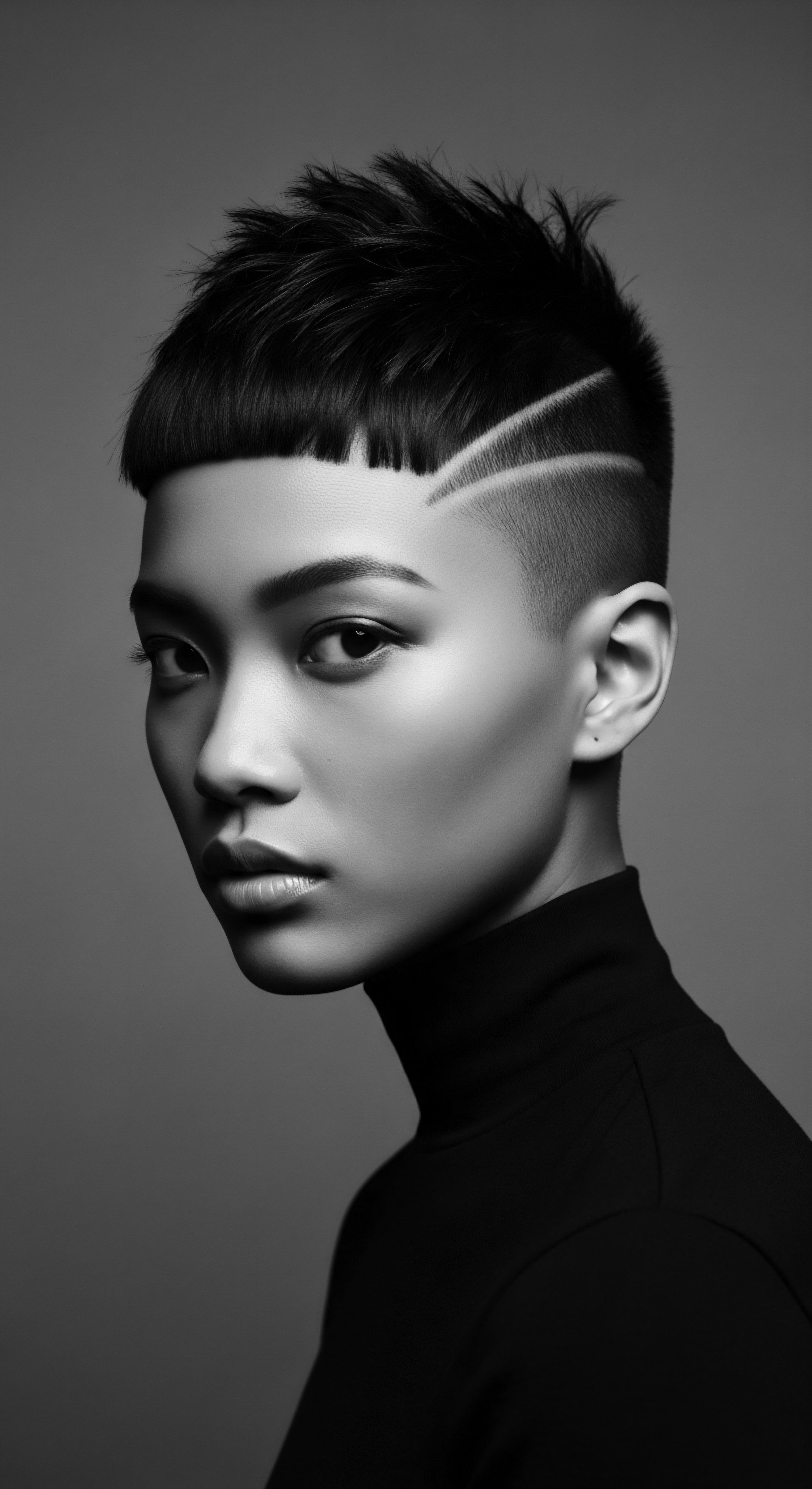
The Nighttime Sanctuary and Bonnet Wisdom
The ritual of nighttime hair protection holds deep cultural significance, extending beyond simple convenience. It represents an inherited understanding of how to safeguard textured hair, which is prone to breakage from friction. The use of head coverings, from traditional wraps to modern bonnets, has an ancestral basis, rooted in the practice of preserving intricate hairstyles and protecting the hair from environmental elements and sleeping surfaces.
While specific plant choices may not directly dictate the fabric of a bonnet, the underlying principle of protection often involved oils and butters applied to the hair prior to covering. These plant emollients, such as Coconut Oil or Castor Oil, would lock in moisture, allowing the hair to remain supple overnight and preventing excessive dryness or tangling. This preventative measure, combined with protective coverings, reveals a heritage of proactive care aimed at minimizing damage and maintaining hair integrity.

What Does Traditional Problem-Solving Tell Us About Plant Selection?
Ancestral communities addressed common hair concerns—dryness, breakage, hair loss, scalp issues—with an intimate knowledge of local flora. Their plant selections were not random; they were based on observed healing properties, passed down through oral traditions and practical application.
A powerful historical example of plant choice in problem-solving stems from the challenges faced by enslaved Africans in the Americas. Stripped of their traditional tools and familiar environments, they adapted, drawing upon knowledge of native plants and newly introduced species. They employed plants like Cotton (Gossypium Herbaceum), using its seeds, bark, and root, not just for fiber, but for medicinal purposes, a transfer of knowledge from their homelands. (Penniman, 2020) This adaptation exemplifies resilience and the persistent search for botanical solutions to new hair and scalp maladies arising from forced displacement and harsh conditions.
In a modern study from Northern Ghana, Shea Butter and Aloe Vera were the most used plants by women for hair growth and to improve hair texture. This quantitative data reinforces the long-standing, qualitative observations of these plants’ effectiveness within these communities. The persistence of these choices over time, despite the availability of synthetic alternatives, speaks volumes about the deep-seated trust in ancestral wisdom.

Botanical Deep Dives for Textured Hair Needs
The efficacy of traditional plant choices is increasingly validated by contemporary scientific inquiry, bridging the gap between ancestral wisdom and modern understanding. Many of these plants contain compounds now recognized for their benefits.
- Aloe Vera (Aloe Barbadensis) ❉ Used for centuries across continents, its gel is a powerful humectant and anti-inflammatory, promoting scalp health and moisture retention.
- African Black Soap (Ose Dudu) ❉ A traditional West African cleanser, its plantain skins and cocoa pods contribute natural saponins for gentle cleansing and purifying properties, respecting the scalp’s natural balance.
- Castor Oil (Ricinus Communis) ❉ Heavily used in African and Caribbean traditions, known for its thick consistency, which creates a protective barrier, seals in moisture, and is believed to promote hair thickness and growth.
- Neem (Azadirachta Indica) ❉ Valued in traditional herbalism for its antimicrobial and antifungal properties, addressing scalp issues like dandruff.
- Rooibos Tea (Aspalathus Linearis) ❉ A South African botanical, its antioxidants and anti-inflammatory compounds support healthy hair follicles and scalp circulation.
- Marula Oil (Sclerocarya Birrea) ❉ From Southern Africa, rich in oleic acid and antioxidants, providing deep hydration and protection without heaviness.
These plant selections reflect not only what was available but also what was proven effective through generations of observation and application. The heritage of plant choices for textured hair care is a testament to the symbiotic relationship between people and their environment, a bond that continues to nourish and affirm identity today.
| Hair Concern Dryness and Breakage |
| Traditional Plant Remedy (Examples) Shea Butter, Coconut Oil, Marula Oil, Baobab Oil |
| Cultural Origin West, Central, Southern African communities, Afro-Caribbean traditions. |
| Hair Concern Scalp Health (Dandruff, Irritation) |
| Traditional Plant Remedy (Examples) Aloe Vera, Neem Oil, Rhassoul Clay, African Black Soap |
| Cultural Origin Indigenous Americas, North and West Africa, South Asia. |
| Hair Concern Hair Loss and Thinning |
| Traditional Plant Remedy (Examples) Fenugreek, Rosemary, Stinging Nettle |
| Cultural Origin South Asian (Ayurvedic), Native American, African traditions. |
| Hair Concern The selection of plants for textured hair care reflects a deep, inherited knowledge of nature's ability to address specific hair health challenges. |

Reflection
Our exploration of how cultural heritage shapes plant choices for textured hair care traces more than a simple history of ingredients. It illuminates a profound story of resilience, ingenuity, and unbroken connection—a living testament to the ‘Soul of a Strand.’ Each botanical chosen, each ritual observed, speaks volumes about a people’s unwavering spirit and their intuitive grasp of the earth’s bounty. This journey through time and tradition reveals that textured hair care is not merely a regimen; it is a sacred practice, a dialogue between generations, and a vibrant expression of identity.
The influence of cultural heritage on plant choices for textured hair care is not a static relic of the past. It is a dynamic, breathing force that continues to shape routines, inform product development, and inspire a deeper appreciation for natural solutions. As we move forward, the wisdom embedded in ancestral practices calls us to look to nature with renewed respect, to honor the knowledge passed down, and to recognize that true radiance springs from a place of authenticity and connection to our roots. Our hair, truly, remains an unbound helix, ever coiling and expanding, carrying forward the indelible legacy of those who cared for it before us.
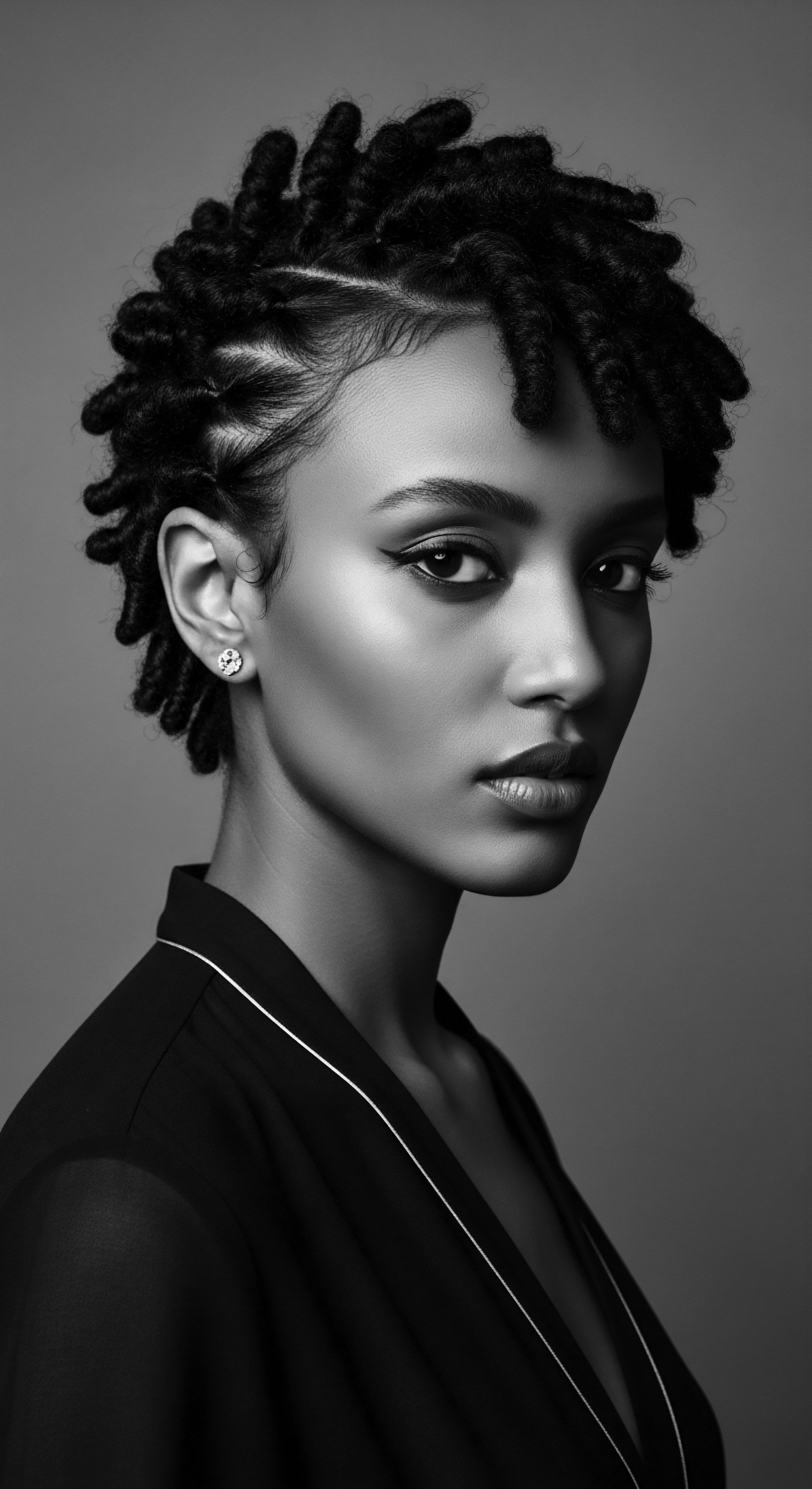
References
- Penniman, L. (2020). Farming While Black ❉ Food Justice, Abolition, and Our Ancestors’ Wisdom. Chelsea Green Publishing.
- Watts, W. A. (2007). African Hair ❉ Its Cultural Significance, Politics, and Aesthetics. Palgrave Macmillan.
- Byrd, A. D. & Tharps, L. D. (2001). Hair Story ❉ Untangling the Roots of Black Hair in America. St. Martin’s Press.
- Mercer, K. (1994). Welcome to the Jungle ❉ New Positions in Black Cultural Studies. Routledge.
- Hunter, C. (2010). Hair ❉ A Cultural History. Yale University Press.
- Hooks, B. (1992). Black Looks ❉ Race and Representation. South End Press.
- Okeke-Agulu, C. (2015). Postcolonial Modernism ❉ Art and Decolonization in Twentieth-Century Nigeria. Duke University Press.
- Barnett, M. (2006). The Rastafari Movement ❉ A North American and Caribbean Perspective. Ashgate Publishing.
- Akerele, O. & Olowokudejo, J. D. (2004). African Ethnobotany ❉ Traditional Uses of Plants in Nigeria. University of Lagos Press.
- Etkin, N. L. (2006). Dawa ❉ Traditional Herbal Medicine in Contemporary Africa. University of Pennsylvania Press.
